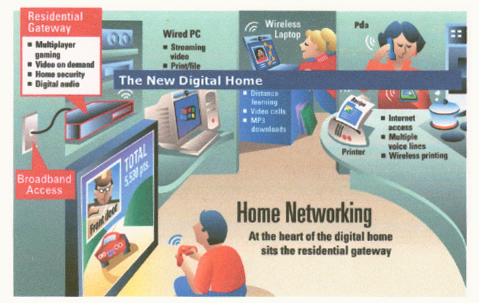What Kind of Network is Right for Me?
Now that you've decided to start a network, it's time to decide what kind
of network best suits your networking needs.
Basically, there are two kinds of networks, wired and wireless. The most
basic difference is that wired networks communicate through data cables,
while wireless networks communicate through radio signals.
Wired networks have been around for decades. By far the most common wired
networking technology found today is known as Ethernet. The data cables,
known as Ethernet network cables or Cat 5 cables, connect the computers
and other devices that make up the networks.
Wireless networks are relatively new. They don't use cables for connections;
instead, they use radio waves, like cordless phones.
Why choose a wireless network?
 |
Freedom—work anywhere.
|
 |
Quick, effortless installation.
|
 |
No cables to buy.
|
 |
Save cabling time.
|
 |
Easy to expand.
Wireless networks are rapidly becoming more popular and coming down
in price. Since they don't require cables, you can use the devices
anywhere in an office or home, even out on the patio. There's no need
to roll out an Ethernet network cable to each room of a house; you
can network anywhere—without wires. Outside of the home, wireless
networking is available in hotspots at coffee shops, businesses, airports—great
when you're on the road and need to get some work done. For convenience,
wireless networking is the answer.
|
Why choose a wired network?
 |
Lower cost.
|
 |
Faster speed—up to 1000Mbps.
|
 |
Longer possible range.
|
 |
Security.
Wired networks have been around for years. They use the most affordable
products and provide the fastest speeds of transmission. The distance
between devices, such as computers, on a network is also much less
restricted in wired networking—up to 300 feet with Cat 5 Ethernet
cables or 1,800 feet using fiber optics. When you need to move large
amounts of data at high speeds, such as professional-quality multimedia,
wired networking is the most efficient way to do it.
|
